I was sleeping and dreaming that I was not in the world
(Alda Merini, aphorisms and magic, Rizzoli, Milan, 1999, p.122)
R32;Not practice pieces or “studies”, but true creations, pouring out from years of reflection and accumulated emotions, that at a certain point demanded, as Pirandello would have, for his creator to come out, to emerge from the hidden confinement of the unconscious and from consciousness itself, to incarnate into concrete, visible images, alive in themselves.
Sergio Fiorentino has recently started painting again, after a long pause, he is now spellbound and gripped in a frenetic desire take up his brush again.
He can deny it no longer, so back with a greater maturity than when he studied at the Catania Academy with Franco Piruca, he is both studying and creating, adhering to his own personal vision of humans and things.
In his realism or rather hyper-realism, that especially applies to his faces, Sergio reveals his knowledge and deep understanding of contemporary hyper-realistic portraiture, covering several figurative styles that particularly attract many young painters today. The zoomed in, detailed face becomes his preferred icon: a series of faces are scattered across his canvases with a marked modernity, yet they also evoke classical styles with a preference for a plasticity, a fleshy voluminosity, that echo the essential form of ancient sculptures.
R32;His faces seem to be shaped by his own hands rather than a paint-brush, as if they were clay or marble, real painted sculptures. They are not dehumanized faces: whether they are like the distant expressionists or more realistic, they immediately appear emblematic of man’s conquest of himself. Almost all the figures have their eyes closed, closed to the degenerate reality they have turned their backs on, which they refuse to see, but not forever, because they want to transform this reality, not to ignore it or annul it: a silent condemnation full of anticipation.
They prefer to think and dream (Dreamers is the title of one of his paintings), to live by their emotions and to crave a dreamlike state, so as not to fall into the void that faces them. If they have lost the ability to see what is real, they have regained it by developing it into an inner sight, into emotion. They also smile in a kind of ecstasy all of their own. (Mediterranean).
R32;The dream leads them to the sea, the realm of freedom and infinity, whose voice they are attracted to, the voice they heard in the shell they raised to their ear. They are wearing their swimming caps and are ready to dive (Portrait with diver) or they have already dived (Diver), while fishes lightly brush up against them, tiny fishes or huge fishes like tuna, (Dreamer with tuna, Woman with Pleiades). They dream these fishes arranged in the constellation of Pleiades, coming back from the depths of the infinite ocean to the celestial infinity on high. These symbols are redeemed, all positive, from the water, to the fish, to the shell.
R32;“ Life is a dream” sang Calderon de la Barca.
The dream of Fiorentino’s mummified faces is not a nocturnal dream, not a dark, painful dream, but a sunny, luminous dream like the world as we would like it. But for the moment they live in an environment with no air, like inside a glass case: men and women, in scenarios almost without a stage, immersed in a silent meditation, not absent, but evoking the invisible underground fluid, hypnotic, mysterious faces, but serene at the same time .
His fragmented visions are not representations of the dreamlike state, but the condition of the dream, the split between being the conscious and unconscious. The reflection, evoked by the constant portrayal of twins, becomes the symbol of the second reality, images and masks of the inner experience.
Someone once wrote “The eyes are the dark room of consciousness” and the inner eye, the eye of the wandering mind escapes to infinity. But it is also with the mind’s eye that art penetrates and inquires into reality, beyond the visible: the eyes and the gaze are central in painting's topic.
Sergio Fiorentino knows this. So his visionary approach is loaded with symbols and cultural references to the eye of Odilon Redon (Le Cyclope), to the blind man, the fortune-teller Apollinaire, who refuses to watch the present, to the fishes of De Chirico, to the heads of Magritte, to the elegant, delicate and delightful beauty of Donghi or Casorati's Novecento (Woman with garfish, Woman with Pleiades). Everything is soaked in a vein of magical Realism and Symbolism, rather than Metaphysics, in a pleasant merging of figurative and metaphoric stimuli.
In this sense, and with great significance, the Mosaic canvas gathers togetherR32;his icons that are most laden with symbolism and pictorial emotion, offering a clear interpretative key for the observer’s open gaze, from an angle, compared to the closed eyes of the figure.
Also, from a chromatic point of view, the preference given to pastels and subtle colors, reminding of certain delicate tones of the Scicli School, with Guccione in the lead (his seas and infinite horizons), brings us back to this need - perhaps impossible, perhaps unattainable – for ethereal beauty to be offered to the world.
R32;Anna Maria Ruta
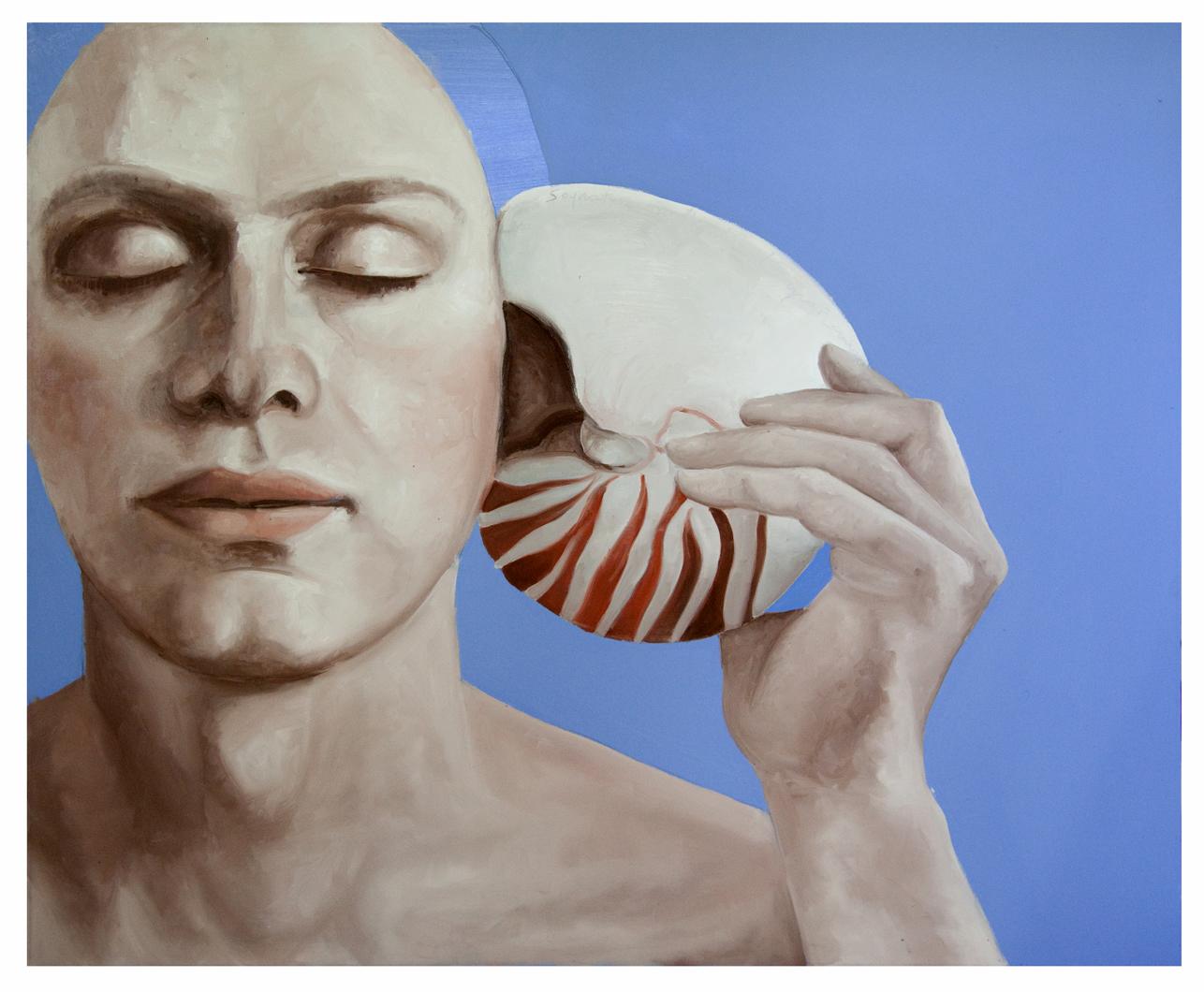
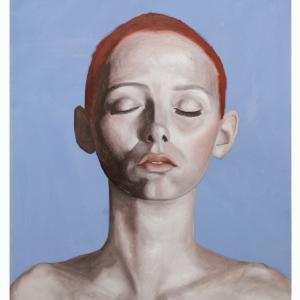
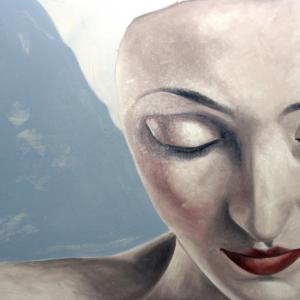
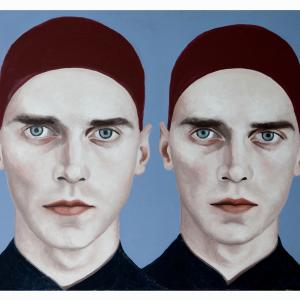
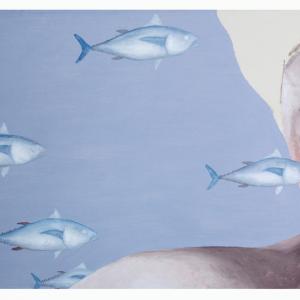
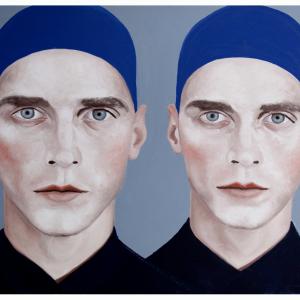
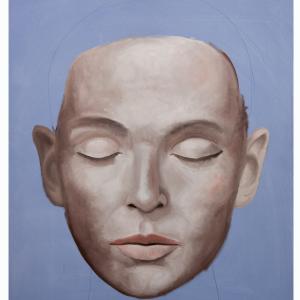
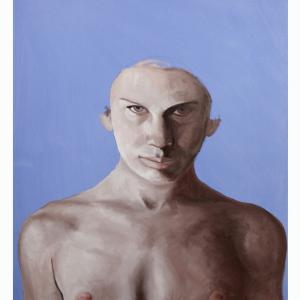
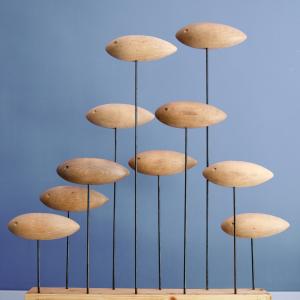
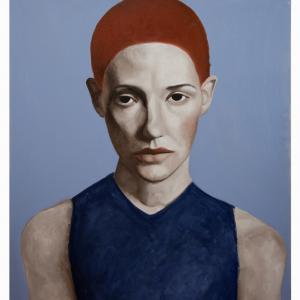
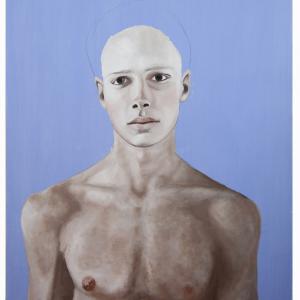
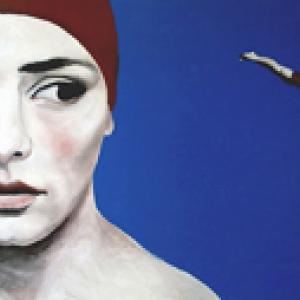
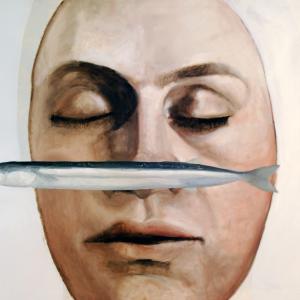






Comments 3
Say something